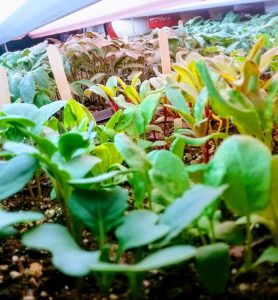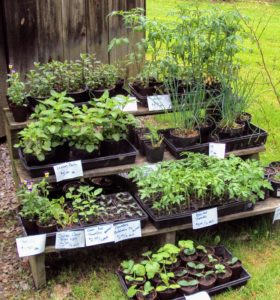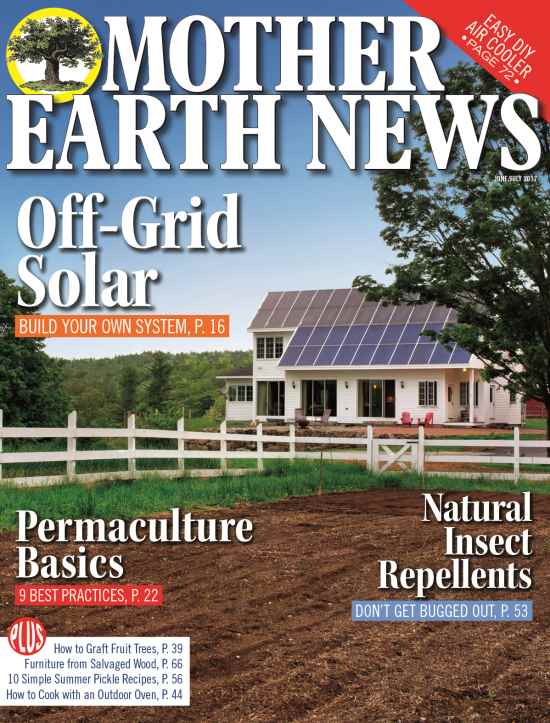If you garden, you can start your own plants like tomatoes or peppers, or you can purchase them elsewhere. While it is obvious that a packet of seeds costs less than a flat of already-started plants, there are a number of other reasons to start your own transplants. If you are only familiar with what seedling vegetables you can find locally, you may want to explore starting your own.
1. Varieties
Do you love heirlooms? Trying new vegetables or exotic varieties? It’s easy to find hundreds of new and exciting veggies when looking through seed catalogs. However, when you stop by your local garden center or big box store that carries plants, you’re likely to find a limited selection. While you can certainly fill your garden space with hybrid tomatoes and run-of-the-mill pepper varieties like basic bells and jalapenos, offering unusual things will attract attention at farmer’s markets.
I have customers that stop by each summer because I grow ground cherries. These are a tomatillo relative with a sweet flavor. They aren’t available in stores and are not commonly found at other markets. By having them, I entice customers to stop by, and while they are at my farm stand, they will often pick up other products as well. Choosing to start your own varieties from seed means you can customize your garden with flavors your family will love to eat. Choosing heirloom varieties also means it is possible to save your own seeds at the end of the growing season. This not only helps to preserve historic varieties, but also reduces your out of pocket cost for next year’s garden.

Staring your own seed means unlimited variety!
2. Growing Methods
If you raise your own plants from seed, you can be sure that they have been treated with care. You also have full control over what chemicals they have been exposed to. Many plants found at chain retailers are not grown using organic methods, which means they can carry unwanted chemicals into your garden. A big concern is that some garden veggie seedlings have been treated with neonicotinoids. These chemicals are very effective at killing bugs that may be harmful to the plant. They are also toxic to bees. Bringing home plants that can kill your native pollinators or carefully tended honeybee hive is certainly something you want to avoid.
Caring for your own seedlings means you can be confident that the green color of the leaves means a healthy plant and not one that’s been given excessive doses of nitrogen. While this creates the appearance of a green, growing, healthy plant, it often results in a seedling that is mostly leaves, without a healthy root base. While the leaves are the attractive part that catches your eye, the roots are equally, if not more, important to producing a plant that will thrive when you transplant it into your garden.
3. Extra Seedlings
When I start my seedlings, I always plant extras. This allows for seeds that fail to sprout. It also means I can cull plants that fail to thrive without cutting myself short. After filling my own garden, the extra plants are not wasted effort, but another source of potential income. I transplant leftovers into larger pots and carefully tend them until our farm stand’s opening day. This means I have beautiful transplants to offer my customers. It helps to fill out our offerings early in the season before many of the vegetables are ready to pick, and give my gardening customers the opportunity to grow some new varieties. Doing this each spring brings in customers looking for special heirloom varieties. Just like offering unusual veggies, offering heirloom seedlings is a draw for some folks who may otherwise not stop by. And if you can get customers in the door, you greatly increase your chance of selling them not just a few plants, but also other items you have.

Extra plants can be offered for sale, meaning extra income!
4. Enjoyment
Starting plants from seed is something I truly enjoy. Living in northwestern Pennsylvania, winter hangs on well into spring. Starting seeds indoors gives me the pleasure of seeing new green growth long before spring takes hold outside. It does take some extra work and equipment, like lights and trays. But I don’t mind turning part of our living space into a greenscape. In fact, I enjoy it so much that one of our longer-term plans is to create a heated greenhouse space so can start more plants earlier in the season. I also find a sense of satisfaction and pride when I look out over our market garden and know that each and every plant was started right here. It’s also extremely enjoyable to me to help steward historic varieties, like a bell pepper grown by Thomas Jefferson. It’s exciting to cook with unusual varieties, whether it is Dragon’s Tongue beans or lime basil. Starting seeds didn’t always come easily to me. I perfected my methods by trial and error over a number of growing seasons. But it’s exciting to be able to now say that it’s an extremely important part of how our farm now functions.










